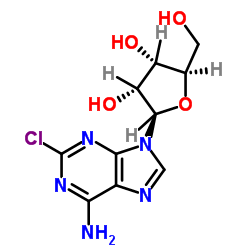| Structure | Name/CAS No. | Articles |
|---|---|---|
 |
Native Calf Adenosine Deaminase
CAS:9026-93-1 |
|
 |
2-Chloroadenosine
CAS:146-77-0 |
|
 |
2'-Deoxyadenosine-5'-triphosphate
CAS:1927-31-7 |